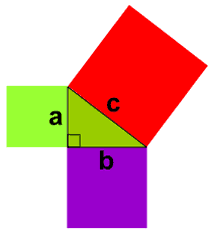Math Arguments
Problems, Questions, and Puzzles to spark discussion and argument in the maths classroom.
Reworking Pythagoras
Pythagorean theorem: \(a^2 +b^2 = c^2\)
In a right triangle, the area of the square drawn on the hypotenuse is equal to the sum of the areas of the squares drawn on the other two legs.
Here is the problem: does the figure whose areas we compare, drawn on the triangle's legs, have to be square?
Can there be other shapes triangles, rhombuses, regular pentagons, etc. that make the Pythagorean Theorem more generally true?
.
Source:
Grant Wiggins
Source: Grant Wiggins, "The Problem of So-Called Problems - unpublished paper 2013"
Source: Grant Wiggins, "The Problem of So-Called Problems - unpublished paper 2013"
More Information:

 ++
++